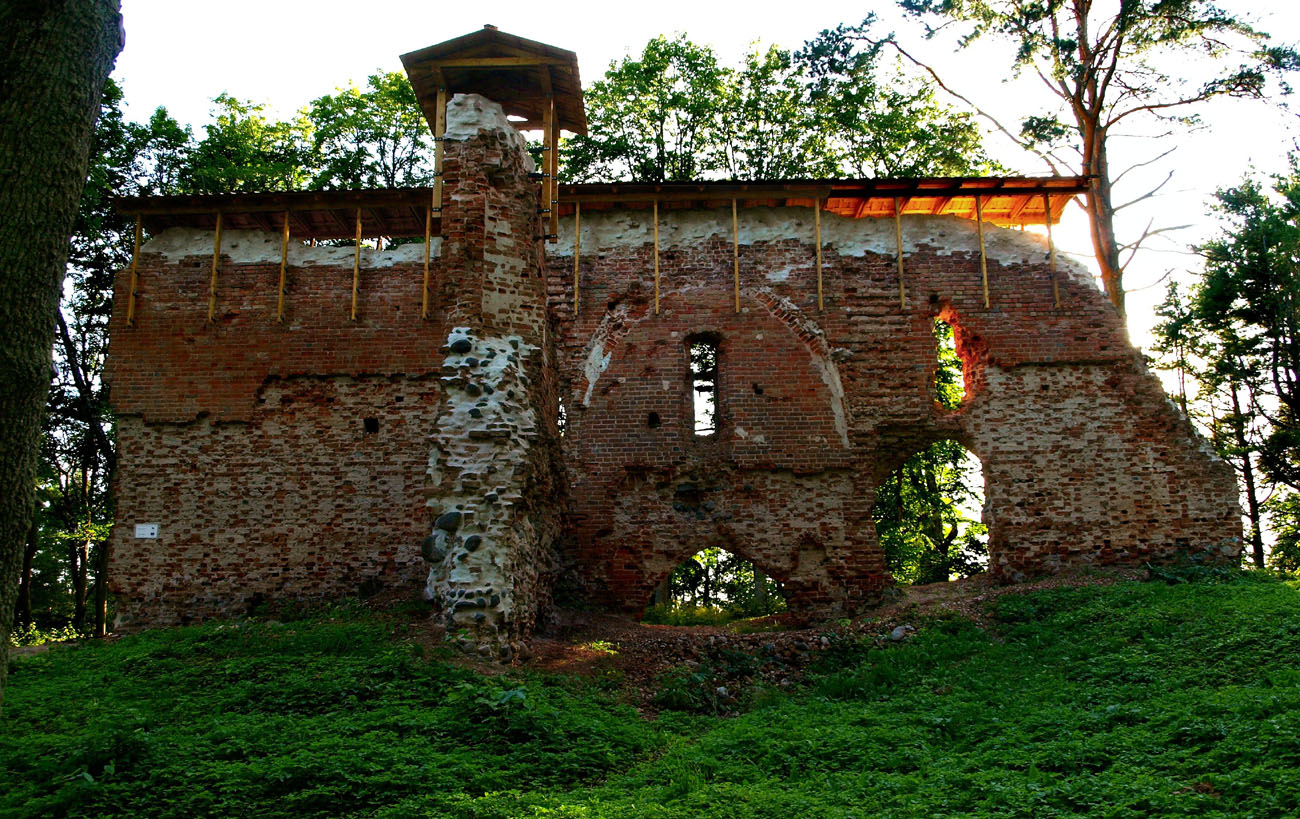History
Knight’s castle Rõngu (German: Ringen) was built after 1340. It was an important point in the defense system of the western border of the episcopal principality. It was owned by the Tödwen family and was extended many times. In the 16th century after the occupation of Dorpat by the Moscow troops of Ivan the Terrible, the castle changed owners several times, it suffered severe damages, as a result of which it lost the military significance. After the Livonian War together with the surrounding areas it was joined to the Polish–Lithuanian Commonwealth, and the new authorities gave it to the Jesuits. The monks were expelled from Rõngu in 1625 by the Swedes, under whose rule the stronghold eventually turned into ruin.
Architecture
The castle was built of bricks, like other defensive seats of the Dorpat bishopric. It was erected on a small elevation of land on the northern side of the Rõngu River, towards which rather steep slopes descended. It was created on a rectangular plan marked out by the perimeter of the defensive wall. It probably had three wings, with a gateway leading through the western one. On its upper floor there could have been a vaulted chapel, recorded in 1413 under the invocation of the Holy Cross. On the eastern side of the castle, a poorly developed economic outer bailey adjoined.
Current state
Only a fragment of the western wall surrounded by forest has survived to this day, along with the adjacent relics of the transverse wall. In this part, Gothic windows, the pointed arch of the main entrance gate to the castle and traces of the vault on the first floor are still visible. Admission to the ruins of the castle is free.
bibliography:
Borowski T., Miasta, zamki i klasztory. Inflanty, Warszawa 2010.
Herrmann C., Burgen in Livland, Petersberg 2023.
Tuulse A., Die Burgen in Estland und Lettland, Dorpat 1942.

